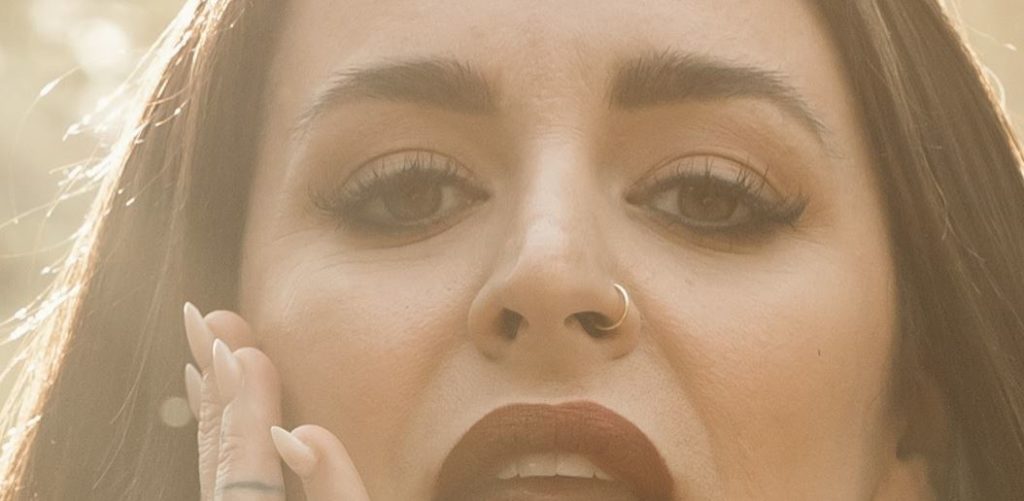Breathing is a crucial component of our autonomic nervous system, vital for survival. However, its potential for impact goes far beyond its role in sustaining life. Proper breathing techniques can help regulate blood pressure, reduce stress, and bring a sense of focus and presence.

Ancient yogis were aware of the power of the breath and developed a system of breathing practices, which they named one of the eight limbs of yoga. Many yoga teachers view pranayama as the most significant aspect of yoga, even more important than the physical postures. Pranayama is often overlooked in modern, westernized yoga practices despite its potency. This article will highlight the various types of pranayama and the benefits of incorporating them into your yoga routine.
What is Pranayama Breathing?
Pranayama is a Sanskrit term that refers to the control of one’s breath. It comprises two words: “prana,” meaning breath or life force, and “ayama,” meaning control. Pranayama involves a set of practices that regulate the breath and the flow of life force within the body. The origin of pranayama breathing techniques can be traced back to the early history of yoga and meditation in India, around 5000 BC. They are documented in ancient texts such as the Yoga Sutras and are considered a fundamental component of yoga practice.
Pranayama breathing techniques involve three main stages regardless of the type being practiced. These stages are Purak, Kumbhak, and Rechak. Purak refers to inhalation through the nostrils, Kumbhak is breath retention, and Rechak is exhalation. By following these three stages, practitioners can properly control their breath and achieve the desired effects of pranayama.
Benefits of Pranayama Breathing
Pranayama serves as a connection between the physical body and the mind. Research suggests that practicing pranayama can improve overall health and well-being. Practicing pranayama in a peaceful environment with fresh air, either early in the morning or before meals, is recommended. While numerous sources provide information on different types of pranayama with illustrations, it is advisable to seek guidance from an experienced teacher before attempting them on your own.
Ultimately, not all types of pranayama are appropriate for everyone, so be cautious of exercises that may negatively impact any existing health conditions. It is recommended to begin pranayama after engaging in yoga asanas for a few months.
10 Different Types of Pranayama
There are several types of Pranayama, each designed to improve the health and functions of different body parts. It is critical to understand each variety because each offers unique advantages. The various types of Pranayama to learn are listed here. Check all of them below.
Dirga Pranayama (Three-Part Breath)
This type of Pranayama is one of the most basic breathing exercises. It is simple yet precise that is ideal for beginners as it corrects irregular breathing habits. It is a Pranayama that combines three different breathing exercises. Hence, this explains the Three-Part Breath name it has. The primary focus of this breathing method is elevating the mood by stimulating the endorphins, relieving stress and anxiety, and increasing anti-aging hormones.
While the Dirga Pranayama is good to practice for beginners, it is not for everyone. In fact, it should be avoided by people who are dealing with nasal inflammation or nasal infections, as breathing can become harder.
How to do it:
- Sit in a comfortable position or lay down on your back.
- Start with taking normal breaths to relax the body.
- Take a slow, deep breath. Feel your belly filling up with fresh air.
- Observe as the air continues to expand the chest region.
- Feel the breath flow finally reaching the top of your clavicles.
- When the breath is full, slowly exhale in the reverse direction.
- Observe when air is emptying from the neck, chest, and abdominal region.
- Repeat the cycle for the next 10-20 breaths.
Sama Vritti Pranayama (Square Box Breathing)
The word “Sama” is a Sanskrit term that means the same or equal, while the term “Vritti” means flow or wave. When it comes to the method, this Pranayama is done in four different steps. That’s why it is also popularly known as Square Box Breathing. What makes this good to practice is the intention to equalize the length of each inhalation and exhalation. Hence, promoting deep, soul-nourishing relaxation.
Ideally, this Pranayama is great for people who are overwhelmed by stress. Meanwhile, it is not good for pregnant women and people dealing with high blood pressure or respiratory issues.

How to do it:
The Square Box Breathing method follows four simple steps:
- Inhale deeply from the nose for at least four seconds.
- Then, hold your breath for four seconds.
- Exhale for four seconds.
- Hold your breath for four seconds and do the breathing steps all over again. Practice this breathing method up to five times.
Nadi Shodhana Pranayama (Alternate Nostril Breathing)
The word “Nadi” is a Sanskrit term that means channel. Meanwhile, the “Shodhana” translates into purification. With that said, this Pranayama breathing method aims to cleanse and tightly interlink the body and mind. Thus, the expected result with the consistent practice of the Nadi Shodhana Pranayama incorporates balancing different energies in the body.
Moreover, the Alternate Nostril Breathing exercise can also help regulate the entire pranic system, activate the frontal brain for improved concentration and peacefulness, and help with better depression management. Research also shows that this Pranayama may lead to the ability to quit smoking, reduced anxiety, and increased attention.
In terms of safety, it is ideal and harmless for almost everyone except those with flu or fever or those suffering from cardiovascular diseases.
How to do it:
- Sit in a comfortable, cross-legged position.
- Place your left hand on your left knee.
- Exhale completely.
- Place your right hand to your right nostril to close it.
- Inhale deeply with the left nostril.
- Close the left nostril with your spare hand. Put one finger on it.
- Open the right nostril, exhale completely.
- Inhale through the right nostril. Then, close it.
- Open the left nostril, and exhale completely.
- Repeat the breathing cycle for about 10 times.
Kapalbhati Pranayama (Skull Shining Breath or Breath of Fire)
The Kapalabhati Pranayama is considered to be the most powerful and deeply cleansing Pranayama exercise. It is a yoga breathing exercise that is intermediate to advanced in difficulty. The name comes from the Sanskrit words “Kapal” meaning skull and “bhati” meaning “to shine”. This technique strengthens the chest, cleanses the abdominal organs, and boosts the circulatory and nervous systems.
How to do it:
- To start the practice, place your hands on your knees and focus on your belly.
- Take a deep inhalation through both nostrils.
- Exhale forcefully, using your hands to press gently on your belly if necessary.
- Inhalation should occur naturally after exhalation. The focus should be on the exhalation, while inhalation is passive.
- Aim for 65-70 cycles per minute, gradually increasing to 95-105 cycles per minute as you get more comfortable.
- A cycle consists of an exhalation and inhalation together. Start with a couple of minutes of this technique.
Bhramari Pranayama (Bee Breathing)
The Bhramari Pranayama is a type of breathing exercise named after the black Indian bee. This technique is well-known for its capacity to quickly calm the mind and alleviate agitation, annoyance, anxiety, and anger. Bhramari pranayama is a straightforward practice that can be performed anywhere and is a convenient way to relieve stress.
How to do it:
- Get into a comfortable posture.
- Cover your ears and eyes using your fingers and thumbs.
- Take a deep inhalation, and then exhale slowly while making a buzzing sound similar to a bee.
- You can also make the sound ‘om’ if this is easier to imagine.
- Repeat the cycle of inhaling, exhaling, and making the buzzing or “om” sound for 5-10 minutes.
Bhastrika Pranayama (Bellows Breath)
The Bhastrika Pranayama commonly referred to as the Bellows Breath, is a type of breathing exercise that resembles fanning a fire with a steady flow of air. “Bhastrika” is derived from Sanskrit, meaning “bellows.” The practice involves actively inhaling and exhaling air to fill and empty the abdomen and lungs. It also helps to ignite the inner fire of the mind and body and enhances digestion. While it can balance Kapha and Vata, if pitta is already agitated, practicing this technique with moderation and gentleness is advised.
How to do it:
- In a seated position with the legs in Padmasana and eyes closed, take a deep inhale through the nostrils while keeping the spine straight.
- Exhale forcefully through the nostrils, using the diaphragm for pumping action.
- Exhale and inhale forcefully, using the diaphragm for support, for about 10 times or for as long as you feel comfortable.
- Then inhale deeply and hold the breath as long as you comfortably can.
- Gradually release the breath, letting it escape through your nostrils.
- After finishing one cycle of Bhastrika Pranayama, take a break with normal breathing and repeat three to five more cycles if desired.
Surya Bhedana Pranayama (Right Nostril Breathing)
Surya Bhedana Pranayama is a yoga breathing technique where only the right nostril is used for inhaling. The name is derived from Sanskrit, with “surya” meaning “sun,” “bhedana” meaning “piercing,” “penetrating,” or “relieving,” “prana” referring to life force energy, and “asana” meaning “pose” or “posture.” It is commonly referred to as “right nostril breathing.”

How to do it:
- Sit in a comfortable seated position with a straight back and neck.
- Close your eyes and focus your attention at the point between your eyebrows, called the third eye.
- Take a few deep breaths, filling your lungs fully and allowing your abdomen to expand on inhale and contract on exhale.
- Relax your left arm at your side. With your right hand, use your ring finger to block the left nostril. Slowly inhale through the right nostril.
- Hold the breath for a few seconds, but avoid holding it if you have high blood pressure or hypertension.
- Using your thumb, close the right nostril and open the left nostril as you exhale slowly. Repeat steps 6-7 for one to three minutes.
- After finishing, release your right arm and take a few regular breaths before opening your eyes.
Chandra Bhedana Pranayama (Left Nostril Breathing)
Chandra Bhedana is a yoga breathing technique that involves inhaling through one nostril, retaining the breath, and exhaling through the other nostril. This process is performed while sitting in a cross-legged meditation posture and using the Vishnu Mudra hand gesture to block the nostrils. The term Chandra translates to “moon” and Bhedana means “to pass through,” thus the technique involves the breath passing through the moon’s energy channel. The benefits of practicing Chandra Bhedana include calming the nerves, purifying the Chandra Nadi, lowering blood pressure, and cooling the mind and body.
How to do it:
- To practice Chandra Bhedana, find a comfortable seated position for pranayama and take a few deep, even breaths to calm yourself.
- Next, form the Vishnu Mudra gesture with your right hand, using your thumb to block your right nostril.
- Your left hand can rest on your left knee or thigh.
- Exhale fully and then inhale through your left nostril, either fully or partially blocked with your ring finger.
- Hold your breath for as long as is comfortable before releasing the left nostril and exhaling through the right nostril.
- Repeat this process for 8 to 10 rounds without a break.
Ujjayi Pranayama (Ocean Breath)
Ocean Breath, also known as Ujjayi Pranayama, is a breathing technique commonly used in vinyasa style yoga to support postures. The breath is characterized by a controlled and deep inhale and exhale, achieved by constricting the back of the throat.
How to do it:
- To practice Ocean Breath, start by finding a comfortable position.
- Begin by breathing through your mouth and constricting the back of your throat, as if trying to fog up a mirror.
- Then close your mouth and continue to breathe through your nose while keeping the throat constricted. This completes one cycle.
- Repeat this process for five to ten cycles.
Sheetkari Pranayama (Hissing Breath)
Sheetkari Pranayama, also known as Hissing Breath, is a cooling breathing practice that helps counteract the heat and sweat of summer. This technique can help combat the effects of summer heat such as indigestion, skin rashes, inflammation, and even high blood pressure and depression. Practicing Sheetkari Pranayama activates our internal cooling mechanism, promoting calm and peace of mind.
How to do it:
- Sit comfortably with your hands on your knees.
- Roll your tongue upward so the bottom of it touches the upper palate.
- Clench your teeth together and expose your teeth by pulling your lips apart.
- Inhale slowly, filling your abdomen first, then your chest and finally your neck. You should produce a slight hissing sound while inhaling.
- Perform the chin lock (Jalandhara Bandha) by bending your neck forward.
- Hold your breath for as long as comfortable.
- Release the Jalandhara Bandha and exhale slowly through your nose.
- Repeat this cycle as many times as you feel comfortable.
Final Thoughts
In conclusion, pranayama is a powerful tool for promoting physical and mental health. From the calming effects of Chandra Bhedana to the cooling benefits of Sheetkari and the support for yoga postures offered by Ujjayi, each type of pranayama offers unique benefits. Whether you’re looking to lower your blood pressure, regulate your breathing, or just find a little inner peace, there’s a pranayama practice for you. Incorporating pranayama into your yoga routine or even practicing it on its own can lead to a greater sense of well-being and improved overall health.
Regina is the right person you need to teach you how to perform breathwork right. Interested in experiencing breathwork with Regina? Regina offers two virtual breathwork sessions per month, which are easily accessible from anywhere in the world. Check out and join us for a session!

Exploring the Types of Pranayama: A Journey Through the Power of Breathing
2024 Regina Lawrence | All Rights Reserved
MENU
Home
SERVICES
RESOURCES
About
Services
Contact
Blog
Podcast
Breathwork & Sound Healing
Business Strategy Deep Dive
Join the Membership
Social Media Management
Press Kit
Site design by Creative Waves Studio
The Witch Kit
Website Design By Creative Waves Studio
2024 Regina Lawerence | All Rights Reserved
MENU
Home
SERVICES
Breathwork & Sound Healing
About
Services
Contact
Business Strategy Deep Dive
Join Breathe, B*tch
Social Media Management
RESOURCES
Blog
Podcast
Presskit
The Witch Kit